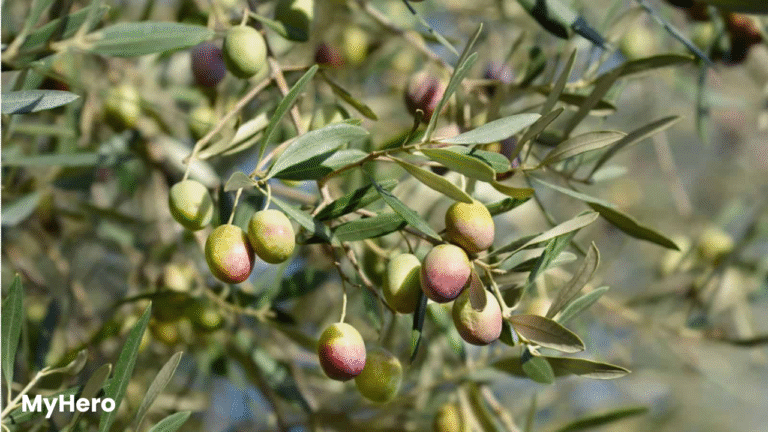A Tree Rooted in Time
The olive tree has stood the check of time. With roots stretching again hundreds of years, it has been part of human culture given that historical civilizations. From the rocky hills of Greece to the sacred lands of the Middle East, olive bushes have no longer best survived—they have flourished. Their resilience and splendor cause them to be one of the most respected and admired trees in history.
Origin and Historical Importance
Olive timber is native to the Mediterranean area. The earliest proof of olive cultivation dates to over 6,000 years in the past, in what’s now current-day Syria and Crete. Ancient Greeks, Egyptians, and Romans all considered the olive tree sacred. In Greek mythology, Athena talented the olive tree to the humans of Athens. It symbolized awareness and victory. The Romans used olive oil for cooking, bathing, or even lighting fixtures and lamps. In the Bible and Quran, the olive tree is a symbol of peace and blessing. Its religious and cultural weight has lasted for millennia.
Varieties That Span the Globe
Today, olive bushes are grown international, in nations like Spain, Italy, Greece, Turkey, and even parts of California and Australia. There are extra than 1,000 exclusive sorts of olive bushes. Each has its specific taste, oil content, and boom traits. For example, Arbequina olives from Spain are slight and buttery, perfect for salads and cooking. Koroneiki olives from Greece yield wealthy, peppery oil. Whether for fruit or oil, every range has its allure.
Why People Love Olive Trees
People respect olive trees for greater than simply their fruit. They have a natural elegance. Their silvery-inexperienced leaves shimmer inside the daylight. Their gnarled trunks appearance sculpted through time. Olive timber can live for centuries—some even for over one thousand years. In landscapes, they upload a rustic, timeless splendor. In homes, dwarf types like “Little Ollie” can develop in pots, making them ideal for balconies or patios.
Health Benefits of Olives and Olive Oil
Olive oil isn’t always simply delicious—it’s notably appropriate for you. Especially more virgin olive oil, which’s cold-pressed and rich in healthy fats and antioxidants. It’s a key part of the Mediterranean weight-reduction plan, one of the healthiest diets in the world. Olive oil facilitates lessening infection, helps heart fitness, and can even lower the threat of stroke. Whether eaten whole or pressed into oil, olives are a dietary powerhouse.
A Champion of Sustainability
Olive bushes are difficult. They don’t need a lot water and may develop in terrible soil. That makes them best for dry, arid climates. Their deep roots assist prevent soil erosion. They can thrive in locations where different vegetation fail. They absorb carbon dioxide and aid biodiversity, making them an eco-friendly preference.
Growing Olive Trees at Home
You don’t want a grove to develop an olive tree. They’re highly smooth to care for. They want full solar—at least 6–eight hours an afternoon—and properly-drained soil. Overwatering is not an unusual mistake, so it’s better to let the soil dry out among watering. Prune the tree gently in past due winter to form it and inspire a healthful boom.
Caring Tips for a Healthy Tree
Olive bushes are low-protection, however they nonetheless want some interest. Use a soil blend that drains nicely. Fertilize once inside the spring and once more in the summer season with a balanced fertilizer. Watch for common pests like scale bugs and olive fruit flies. If leaves start to yellow, test for root rot or terrible drainage. With the right care, your olive tree can stay for decades—or even reward you with fruit in a few years.
Harvesting and Using Olives
When your tree bears fruit, it’s time to reap—usually in overdue fall. You can choose them inexperienced or wait till they flip black. However, olives aren’t suitable for eating immediately from the tree. They incorporate a sour compound known as oleuropein. To enjoy them, you’ll want to treat them. This may be executed with water, brine, or lye. Cured olives can then be pro with herbs, garlic, or lemon. If you are after oil, press the ripe fruit with the usage of a hand-cranked press or take them to a neighborhood mill if to be had.
Fun Facts About Olive Trees
- The oldest recognized olive tree is over 2,000 years antique, placed in Crete.
- Olive branches have been used to crown victors at the ancient Olympic Games.
- The United Nations flag capabilities an olive branch symbolizing peace.
- Olive trees can regrow from their roots even if the trunk is broken or cut.
The average lifespan of a healthful olive tree is three hundred to six hundred years—some stay lots longer!
The Olive Tree in Modern Life
Today, olive timber is more than just a crops. They are layout factors in landscaping. They are symbols of health in health brands. They are used in furniture making, with their wealthy timber grain prized by artisans. Olive oil is likewise gaining recognition in splendor and skincare products due to its hydrating and antioxidant homes.
The Business of Olives
Globally, the olive oil market is booming. It is projected to grow past $15 billion by using 2026, with Spain, Italy, and Greece main production. Boutique olive oil manufacturers are doping up worldwide, often emphasizing organic farming and cold pressing. With rising awareness approximately health and clean eating, olive oil is turning into a staple in kitchens anywhere.
Final Thoughts
The olive tree is extra than a tree—it’s a legacy. A supply of food, remedy, beauty, and proposal. Its roots run deep in human history, and its branches keep growing in the direction of a sustainable future. Whether you are planting one in your backyard or pouring its oil right into a dish, consider you’re enticing with some thing ancient, powerful, and profoundly lovely.
Also Read Here: The Blue Whale Challenge: Truth, Myths, and Warnings

